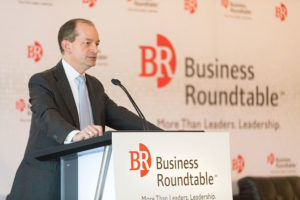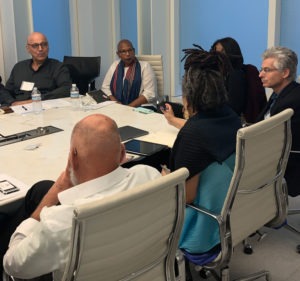January 29, 2011; Source: New York Times | Stephanie Strom’s and Miguel Helft’s analysis in the New York Times of Google’s philanthropy contains several important insights into the problems of over-promise and sometimes the underperformance of high tech social entrepreneurs who pledge, as Google did, to “reinvent philanthropy.”
The high profile Silicon Valley entrepreneur hired to run Google.org (known simply as DotOrg), Larry Brilliant, boasted that “Google.org can play the entire keyboard,” but the Times article called Brilliant’s hyperbole “hubris” and concluded, “DotOrg has narrowed to just one octave on the piano.”
Now Google execs seem to be a bit reticent about DotOrg. Brilliant was ushered out of his job into a position as “chief philanthropic evangelist,” ultimately to leave Google entirely to join the Skoll Global Threats Fund.
Sign up for our free newsletters
Subscribe to NPQ's newsletters to have our top stories delivered directly to your inbox.
By signing up, you agree to our privacy policy and terms of use, and to receive messages from NPQ and our partners.
Hopefully, the decision to make Brilliant an evangelist wasn’t to endorse some of his grantmaking decisions that reeked of conflict of interest. For example he gave an $11 million grant to InStedd (founded by Brilliant) and $2.5 million to the Seva Foundation (co-founded by Brilliant). These aren’t inconsequential amounts; Google’s grantmaking last year, for example, was $184 million, only half of which went as cash grants. Both Google and Brilliant have explanations for the grants to Brilliant-founded nonprofits, but the image is bad.
Google’s actual grantmaking in the end, with the exception of the grants to Brilliant’s old organizations, don’t look like philanthropic reinvention. Grants to universities, Citizen Schools, Ashoka, and UNICEF look like the grants of scads of other foundations. The article is well worth the read, not just about the hubris involved here, but about the culture of Google.
Our favorite anecdote: During one internal meeting on DotOrg, typically attended by Google brass fiddling with their blackberries, Google co-founder Sergey Brin stunned his colleagues by suddenly dropping to the floor to begin doing push-ups. We’re thinking of doing the same at the next meeting of the Nonprofit Quarterly editorial committee and seeing what happens.—Rick Cohen













